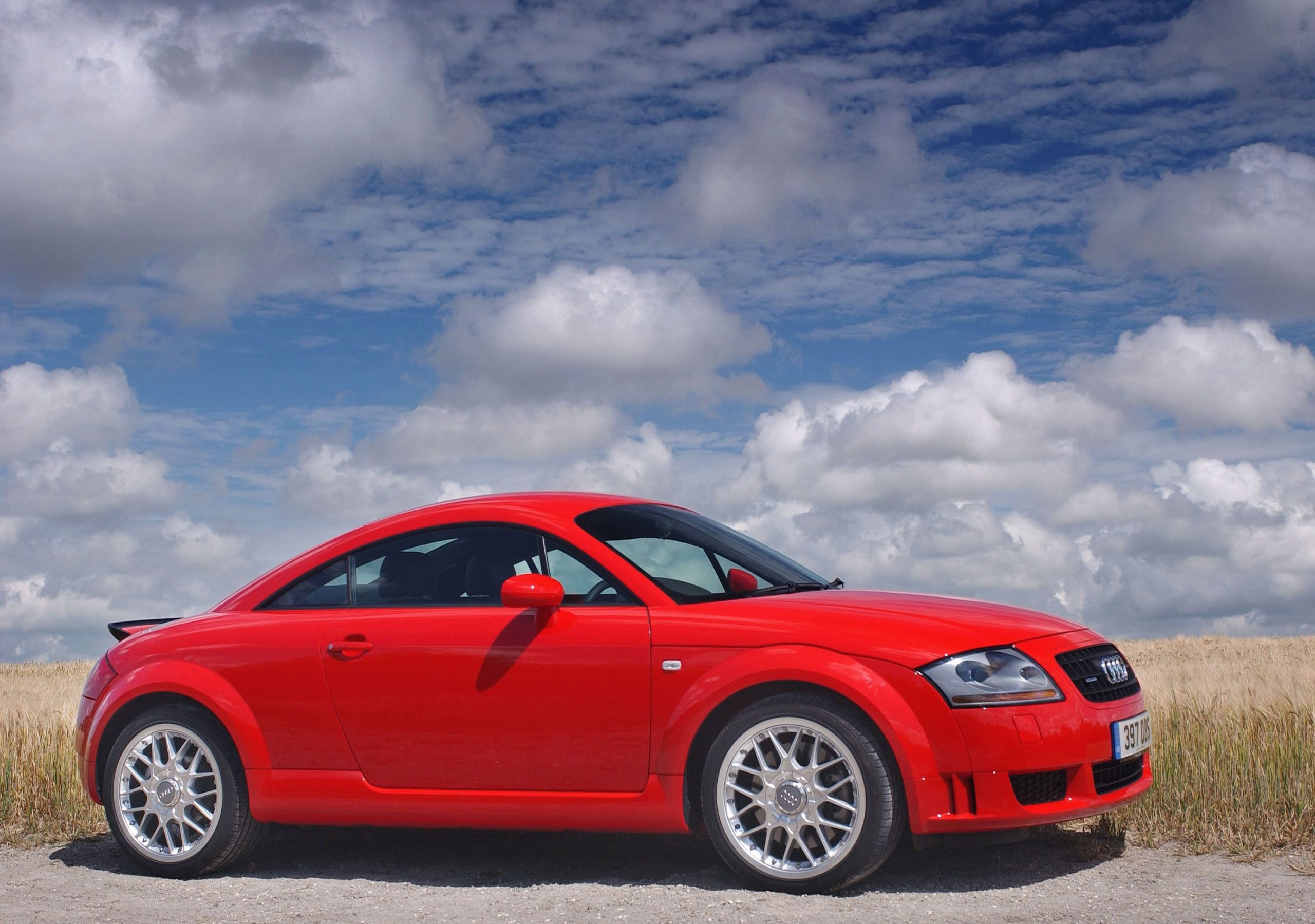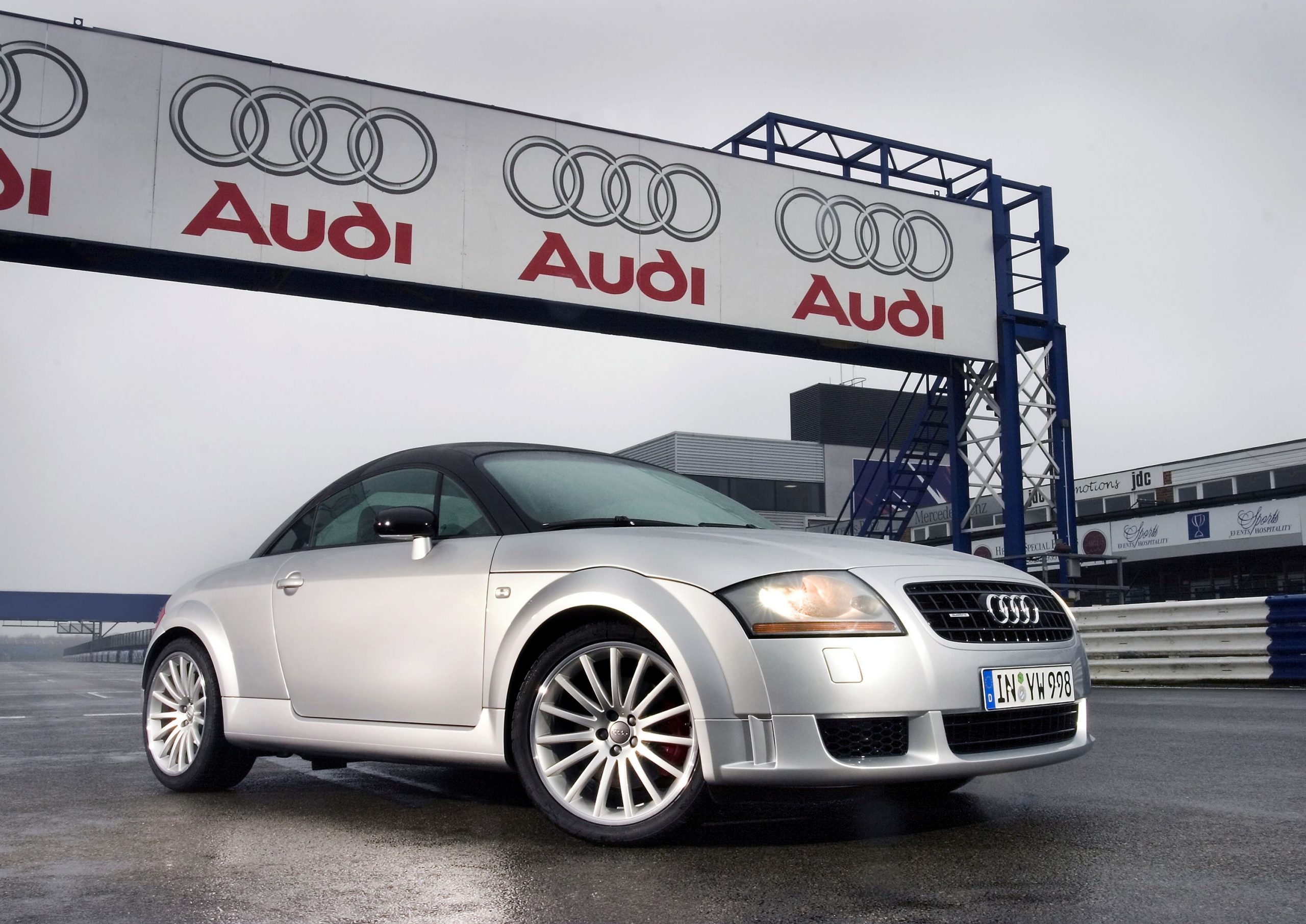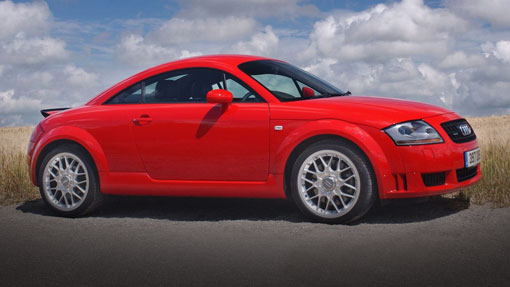BUYER’S GUIDE
Audi TT (Mk1/8N) Review
Later generations of the Audi TT got faster and more luxurious but in style terms the original is arguably still the best
Engine
1.8-litre four-cylinder petrol, turbocharged
Power
225PS (165kW) @ 5,900rpm
Torque
280Nm (206lb ft) @ 2,200rpm
Kerb weight
1,465kg
0-62mph
6.6 seconds
What Is It?
One of the most distinctive slices of modern car design, the TT may have been based on generic VW underpinnings but genuinely looked like nothing else. Referencing everything from Bauhaus and Fritz Lang’s Metropolis through to Audi racing and concept cars, the TT’s bold lines combined style and sophisticated production processes to great effect. Turbocharged engines and Quattro all-wheel drive meanwhile drew a link to Audi’s technical traditions and previous motorsport successes, signature options like the ‘baseball’ leather upholstery showing a playful side as well. Some of its rivals may have offered a more traditional sporting drive but the TT’s combination of style, usability and quality were a statement of intent for turn of the millennium Audi the brand still lives by today. A true modern classic, then, and still an affordable one to boot.
Corrosive Areas
Inner wings
Roof rails
Sills and underfloor seams
Checklist
- Following 1998 unveiling Audi TT launched in the UK in 1999 with 180PS (132kW) and 225PS (165kW) versions of the same 1.8-litre turbocharged engine and the Quattro-branded all-wheel drive system
- Lower-powered models distinguished by the single exhaust outlet and a five- rather than six-speed manual gearbox; 180PS (132kW) versions upgraded to the six-speed from 2000-onwards
- Roadster version followed soon after
- 2003 saw various additions to the range, including more affordable 150PS (110kW) and 180PS (132kW) versions, both with front-wheel drive; at the other end of the scale a new 250PS (184kW) 3.2-litre V6 introduced the then-new dual-clutch ‘DSG’ gearbox
- 2005 versions of the lower-powered models received a power boost, going to 163PS (120kW) and 190PS (140kW)
- Desirable Quattro Sport version also launched in 2005, with a 240PS (177kW) version of the four-cylinder engine, Recaro seats up front and rear ones deleted, signature alloy wheels and two-tone paint with a black roof
- 8-litre engines generally reliable when looked after properly, with regular oil changes and adherence to cambelt service intervals; reports vary but for safety’s sake this should be done every six years or 60,000 miles along with the tensioners and replacement water pump with sturdier metal impeller
- If there’s no evidence of this having been done recently budget to have this carried out on any new purchase; also check under the plastic engine cover for any sign of oil leaks, cracked pipes or broken connectors that may spell trouble; the 1.8 is easily tuned so beware remaps or signs of a hard life
- V6 engines are generally sturdy with correct maintenance but cam chains can stretch (listen for rattles) and replacement is an expensive job
- Haldex all-wheel drive units on Quattro require oil changes every 20,000 miles, while DSG gearboxes require the same every 40,000 miles – check for evidence of this when going through receipts and service history
- Failing instrument clusters a common issue – look out for ‘missing pixels’ and inaccurate fuel and temperature measurements; specialists can recondition to working order
- Although still relatively fresh corrosion can take hold in the roof rails, while dirt collected at trailing edge of sill trims and under wheelarch liners can trap moisture; check panel gaps (especially along complex bonnet edge) for signs of crash repairs
- Failing window microswitches can cause issues – the frameless glass should drop and then reseal when the door is closed
How Does It Drive?
The Golf foundations and front-wheel drive origins mean the TT will never trouble a Porsche Boxster or Honda S2000 in the dynamic stakes, but that’s not to say it isn’t fun to drive. Compared with later versions there’s a straightforward, mechanical connection and meaningful feel to the controls while the 1.8-litre engine, especially in its more powerful tuning, has a gutsy and entertainingly boosty power delivery that rewards revs. Punchy acceleration and sure-footed, all-weather handling on the Quattro models is also satisfying and easy to appreciate in everyday driving situations, and a well-sorted TT should be as entertaining to drive as it is good to look at. The lighter and more powerful Quattro Sport does all this but more so, the gorgeous Recaro seats gripping you tightly through the corners while the 240PS (177kW) tune of the engine pulls with real vigour. The 3.2-litre naturally aspirated V6 is a different experience, the more tuneful exhaust note, smoother power delivery and then revolutionary DSG gearbox helping compensate for the sense it’s a little heavier on the nose than the 1.8s.
What’s Good?

Looks are going to be the primary attraction with the TT and the good news is these are maturing very nicely indeed, and just as striking as they were when the car first arrived in the late 90s. There’s a purity and precision in this first-shape TT Audi never quite matched in the later ones, the earlier models with their cleaner lines and the signature six-spoke alloy wheels perhaps still the most attractive. If you can find one of these with the exotic looking ‘baseball’ interior you’ve landed a bona fide automotive design classic, and a car worth holding onto.
Shared parts with other models in the Audi and VW ranges might count against it in the eyes of sports car snobs but it also means a huge amount of knowledge in how to make the cars go faster and handle better if that’s your bag, shared parts meaning availability and cost of spares is kept more manageable than exotic alternatives. Credit to the design that it also survives transition into the Roadster version without losing any appeal whatsoever, meaning there’s no need to be embarrassed by preferring the soft-top.
What’s Bad?
In addressing early handling wobbles that famously ended in some very serious high-speed crashes on the German autobahn Audi arguably dulled the TT’s handling somewhat, the rear lip spoiler detracting from the otherwise pure lines while measures to calm the pointy steering also dumb things down somewhat. Some of these modifications can apparently be ‘undone’ with tweaks to front bushings to improve steering feel but the TT will always carry a whiff of style over content among some purists.
While generally well-made and sturdy there are some known issues to consider when looking at TTs, and working your way through the large numbers still on sale to find the actually desirable examples can be dispiriting. There’s also the fact they’ve been relatively cheap to buy for a while now, so may have been through as succession of owners more interested in the looks than staying on top of the maintenance required to keep them sweet.
Which Model To Choose?

All first-generation TTs look good, so the same sense of style remains whichever one you go for. The lower powered front-wheel drive ones may prove a little lacklustre to drive, but a later version with the uprated 190PS output could prove cheaper to buy and not far off the pace of the heavier Quattro versions. Given these default to front-wheel drive in most situations anyway you’ll not be losing much in performance or handling pizzazz, either. Saying that it’s still an Audi, and the paired exhausts, extra performance and the Quattro badge of the 225PS (165kW) 1.8-litre version carry additional cachet and definitely make more sense of the overall package. While rare the Quattro Sports are coveted for their extra performance, beefed up looks and genuinely special vibe of the improved interior, so could be worth holding out and paying a little more for. V6s are perhaps less sharp to drive, but the junior GT vibe has appeal of its own and, with a Roadster, you’ll be able to appreciate the more sophisticated engine note all the more with the roof down.
Specifications
Engine
1.8-litre four-cylinder petrol, turbocharged
Power
225PS (165kW) @ 5,900rpm
Torque
280Nm (206lb ft) @ 2,200rpm
Transmission
Six-speed manual, all-wheel drive
Kerb weight
1,465kg
0-62mph
6.6 seconds
Top speed
151mph
Production dates
1998-2006 (total production, all models)
